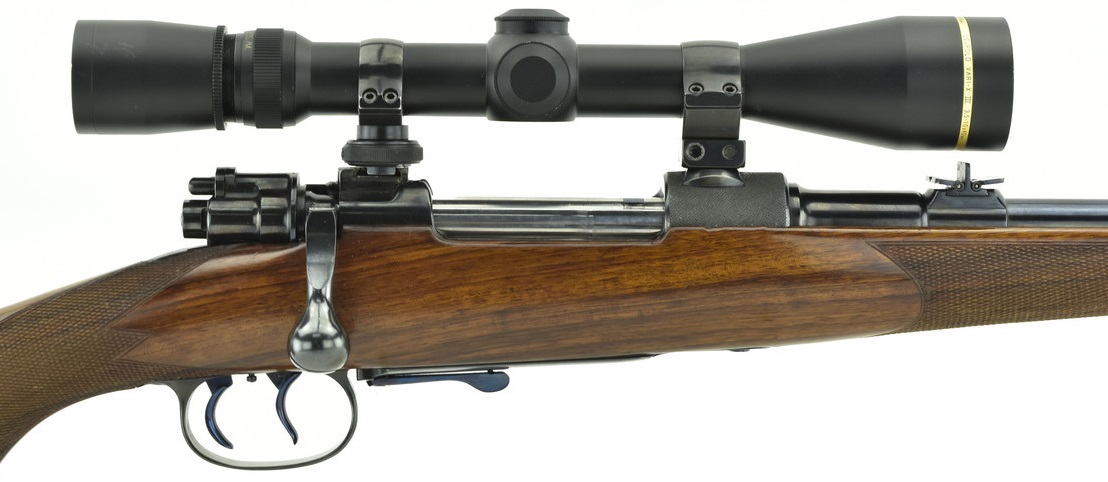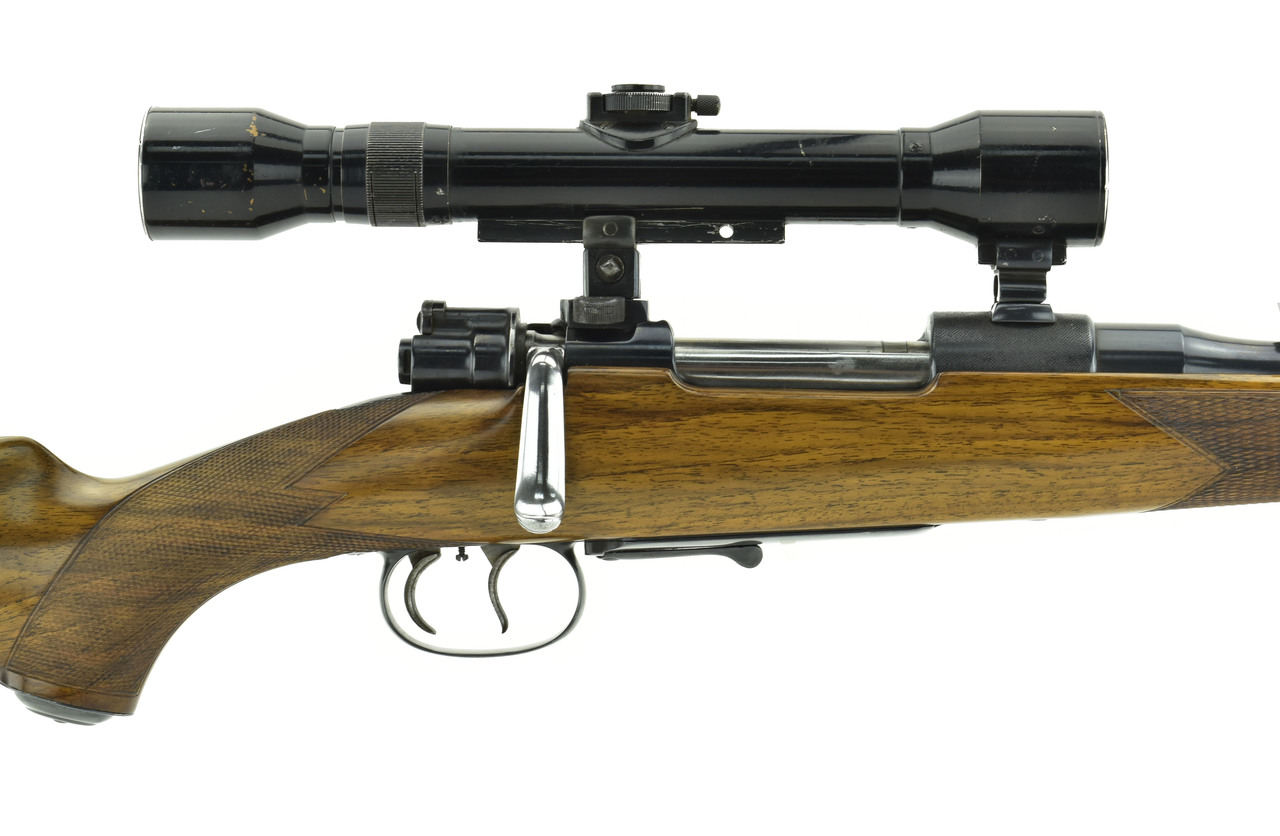Here’s the last in our series of “droolworthy Mauser Sporters” (see here for the 7×57 and here for the 8×60): a “standard” Mauser Sporter rifle from Collectors Firearms, this one chambered for the common 8x57mm cartridge:

Like the first two, this beauty has a full stock and double set trigger; but unlike the others, it doesn’t have a scope, nor is it even drilled and tapped for scope mounts:

But it has attractions all of its own, with a double-leaf rear sight, case-hardening finish on the action, and a half-octagon barrel; and those features alone would put this on a list of “guns I’d snap up in a heartbeat after winning the lottery”.
Longtime Readers will be familiar with my love of Mauser rifles, but should someone have stumbled on this website from another planet, allow me to explain myself.
Mauser bolt-action rifles are almost without exception the best large-scale production guns ever made, whether during the late 19th century (the Swedish M96), in the early 20th century (the WWI G98). the mid-20th century (K98) or since then (M03 and M12). They are strong, beautifully machined, accurate and reliable, and it is no exaggeration to say that it is the one rifle that no gun owner should be without — because long after all the modern rifles have expired from heavy usage, parts breaking and/or abuse, the Mauser will still work pretty much as well as the day it left the factory. And quite frankly, its chambering is irrelevant, whether a military one (6.5x55mm, 7x57mm, 7.65x53mm, 8x57mm), a “hunting” one (6.5x57mm, .270 Win, 8x60mm, 9.3x62mm, .375H&H, .416 Rigby) or in more “modern” ones such as .308 Win, 7mm Rem Mag or .300 Win Mag: whichever cartridge you choose, the Mauser will never let you down.
Over the years, I’ve owned well over a dozen Mausers at one time or another, whether military, customized, re-chambered and sporters, and I regret getting rid of each and every one. The very first rifle I ever bought was an Israeli mil-surp Mauser rechambered for 7.62 NATO, and the first gun I bought when I emigrated to America was a full-stocked Mauser sporter similar to the one pictured above, only with a single trigger. Other than during the bleak years of 2015-17, I have owned at least one Mauser rifle every day of my life, and a multitude of Mauser-style bolt actions (e.g. CZ 550) as well. Of all the millions of choices one can ever make during one’s lifetime, choosing a Mauser rifle will always be one of the best.
Here endeth the lesson.





